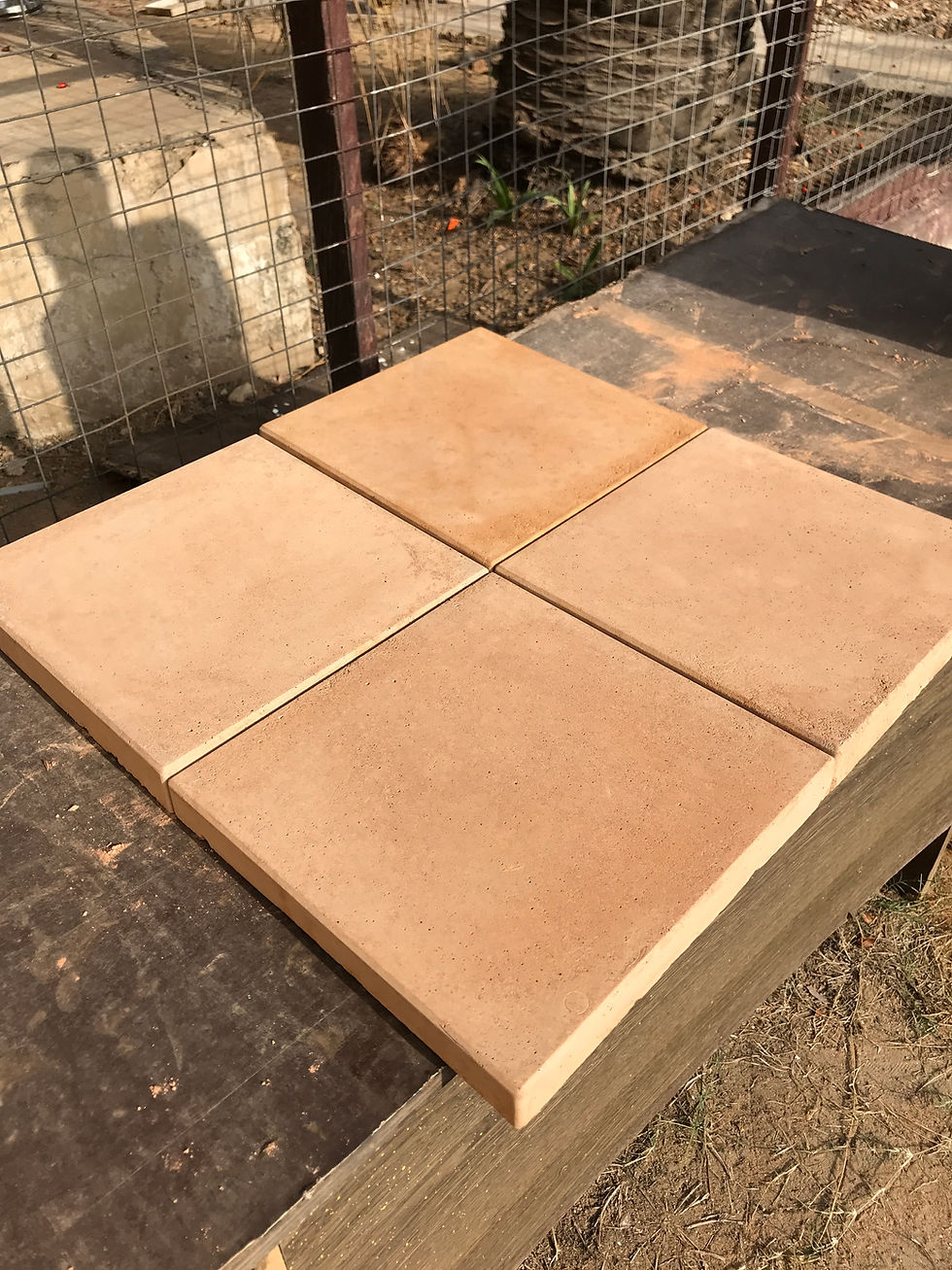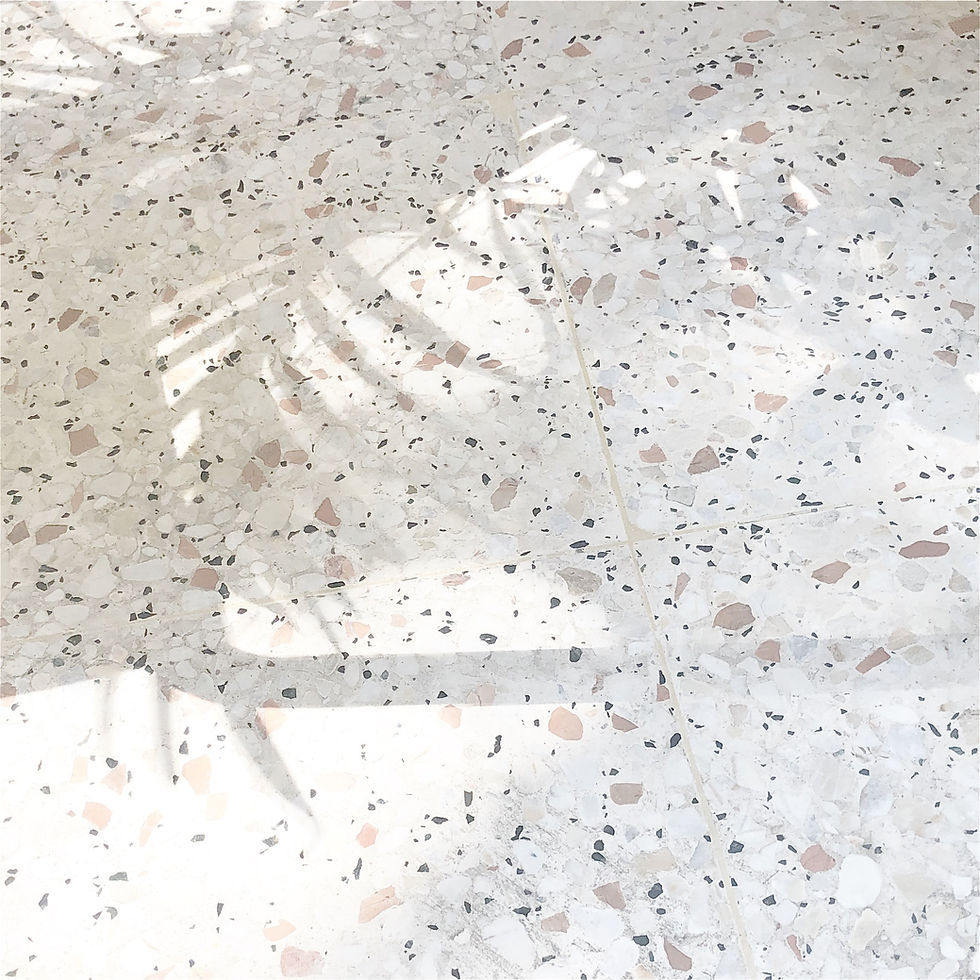As our world becomes increasingly conscious of the environmental impact of our choices, the demand for sustainable and eco-friendly alternatives has skyrocketed. One area where this shift towards mindful living is gaining popularity is in flooring options.
While traditional materials like hardwood, laminate, and tile dominate the market, earth floors are gaining popularity as a highly sustainable eco alternative.
Earth floors, also known as earthen floors, offer a natural and eco-friendly alternative that connects us back to the earth itself. In fact, walking barefoot on earth has been known to be healing.
Studies have shown that walking bare feet on earth helps increase antioxidants, reduce inflammation, and improve sleep.
Earth floors are made primarily from locally sourced earth-based materials such as soil, clay, sand, straw, and stabilizers like lime or cement. With their low environmental impact, unique aesthetics, and numerous benefits, it's no wonder that people are increasingly drawn to this sustainable flooring choice.
In this blog, we will go over 5 of the most common types of earthen and eco-friendly flooring options.
1. Rammed Earth floor

A rammed earth floor is a type of flooring that has compacted layers of soil or a stabilized earth mixture. It is a technique that has been used for centuries and is gaining renewed popularity in sustainable architecture and design.
To create a rammed earth floor, a mixture of moist soil, comprised of clay, sand, and gravel, is placed in layers on the floor area. Each layer is compacted using manual or mechanical tools, such as tampers or compactors, to ensure maximum density and strength. The process is repeated until the desired thickness and levelness of the floor are achieved.
One of the key advantages of rammed earth floors is their durability. The compacted layers create a solid and resilient surface that can withstand heavy loads and high traffic. Additionally, the thermal mass of the earth helps regulate indoor temperatures, providing natural insulation and contributing to energy efficiency.
Rammed earth floors also offer a unique aesthetic appeal. The compacted soil creates a textured surface with variations in color and patterns, giving each floor a distinct and organic character. Depending on the desired finish, the surface can be left natural or treated with sealants for added protection.
Rammed earth floors are becoming an increasingly popular environmentally friendly choice of flooring. The materials used are typically locally sourced and require minimal processing, reducing carbon emissions associated with transportation and manufacturing. They are also non-toxic and have a low environmental impact compared to conventional flooring options.
2. Poured Earth

A poured earth floor is similar to that of a concrete floor but using natural materials and either lime or cement as a stabilizer.
To create a poured earth floor, a mixture of earth is combined with stabilizers like cement, lime, or other natural binders. The mixture is mixed to a wet consistency and poured onto the subfloor. It is then leveled and compacted to achieve a smooth finish.
The stabilizers in the mixture help enhance the strength, durability, and moisture resistance of the poured earth floor. They promote the bonding of soil particles and contribute to the overall stability and longevity of the floor.
One of the advantages of poured earth floors is their versatility. They can be installed over various subfloor materials like concrete, compacted gravel, or even existing floors, making them suitable for both new constructions and renovations.
Earth floors are popular with people seeking an eco-flooring solution as the earthy tones and textures of the soil create a warm and inviting aesthetic. The surface can be left as is or finished with sealants, natural waxes, or linseed oil to enhance its durability and visual appeal.
3. Stabilized Earth Tiles

Stabilized earth tiles are a great eco alternative to conventional tiles. It has the same conveniences of laying traditional tiles but it uses a lot more natural materials. In fact, some tiles that are manufactured in China can possess toxic materials and are even banned from export to some Western countries.
Stabilized earth tiles offer several benefits. Firstly, they provide a sustainable and environmentally friendly alternative to tiles. The soil used in the production of these tiles is typically sourced locally, additionally, the stabilizers used can be natural and non-toxic, further enhancing their eco-friendliness.
These tiles also possess good thermal properties, helping to regulate indoor temperatures and contribute to energy efficiency. They can provide natural insulation and help maintain a comfortable environment within buildings.
Stabilized earth tiles come in various shapes, sizes, and finishes, allowing for design versatility. They can be used for flooring, walls, and even roofing applications. Their natural appearance and earthy textures can add aesthetic appeal to a space, creating a warm and organic ambiance.
Moreover, these tiles offer durability and longevity. The combination of soil and stabilizers results in a robust material that can withstand the test of time and resist moisture, making them suitable for both interior and exterior applications.
4. Adobe floor

An adobe floor refers to a type of flooring made from adobe, a mixture of clay-rich soil, sand, and straw. Adobe floors have been used for centuries in traditional earthen construction methods and continue to be appreciated for their natural beauty and durability.
To create an adobe floor, the mixture is typically mixed with water to form a workable consistency. The mixture is then poured onto a prepared subfloor or directly onto the ground and leveled . The adobe is left to dry and harden, forming a solid and compacted surface.
One of the key advantages of adobe floors is their thermal properties. The high thermal mass of adobe helps regulate indoor temperatures, keeping spaces cooler in hot climates and warmer in colder climates. This natural insulation contributes to energy efficiency and can help reduce heating and cooling costs.
The natural colors and textures of the adobe mixture create a unique and inviting ambiance. The floors can be left as is for a more rustic appearance or finished with sealants, waxes, or other coatings to enhance their durability and visual appeal.
Adobe floors are also environmentally friendly and sustainable as the materials used are typically locally sourced. Adobe is a non-toxic and recyclable material, making it a responsible choice for eco-conscious circular construction.
It is important to note that adobe floors require regular maintenance to prevent moisture damage and wear. They may need to be periodically resealed or coated with protective layers to ensure their longevity.
5. Terrazzo Floor

Not exactly an earth floor, but the use of recycled materials makes it an eco alternative, and in my opinion, terrazzo floors complement rammed earth buildings so well.
A terrazzo floor is a type of flooring that consists of chips of various materials, such as marble, granite, glass, or other aggregates, set in a binder material, typically cement or epoxy resin. It is a versatile and durable flooring option used for centuries in residential and commercial settings.
The process of creating a terrazzo floor involves several steps. First, the chosen aggregates are mixed with the binder material to form a mix. This mixture is then poured, spread, and leveled onto a prepared subfloor. Skilled craftsmen or specialized machinery are used to evenly distribute and embed the aggregates into the binder.
After the initial pouring and leveling, the floor is left to cure and harden. Once it has reached the desired strength, the surface is ground and polished to reveal the embedded aggregates and create a smooth and glossy finish. The final result is a stunning, seamless floor with a mosaic-like appearance.
Terrazzo floors offer numerous benefits. They are highly durable and resistant to wear, making them suitable for high-traffic areas. The use of various aggregates allows for endless design possibilities, allowing for customized patterns, colors, and textures. Additionally, terrazzo floors are low maintenance and easy to clean, requiring only regular sweeping and occasional damp mopping.
From an aesthetic standpoint, terrazzo floors are known for their timeless elegance and versatility. The combination of different aggregates can create a range of visual effects, from subtle and monochromatic to bold and vibrant designs.
In recent years, terrazzo has gained renewed popularity as an eco-conscious flooring option. Sustainable alternatives to traditional cement binders, such as resin binders made from recycled materials, are being used to reduce environmental impact. Additionally, the durability and long lifespan of terrazzo floors contribute to sustainable construction practices by minimizing the need for frequent replacements.
Would you choose and earth floor?

Choosing and earthen floor is not just a design choice; it is a conscious decision towards sustainable living. As we become more aware of the environmental impact of our choices, the allure of earth floors continues to grow. From rammed earth and adobe floors to poured earth and stabilized earth tiles, these natural and eco-conscious flooring options offer a range of benefits that go beyond aesthetics.
Earth floors connect us to the earth's natural elements, providing a warm and inviting atmosphere in our living spaces. They offer exceptional durability, creating long-lasting surfaces that require minimal maintenance. Choosing earth flooring is an opportunity to create a harmonious connection between our living spaces and the planet. It allows us to appreciate the beauty and resilience of natural materials while making a positive impact on our environment.

Check out our Rammed Earth online course and E-Book

Comments